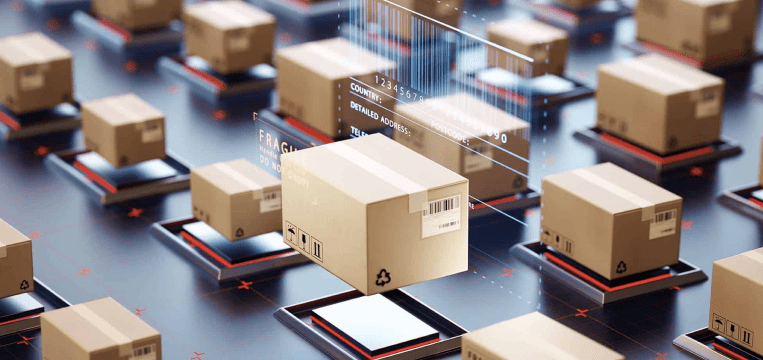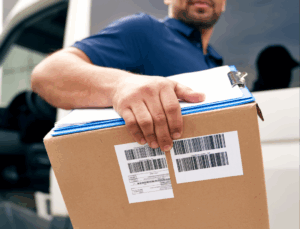For many logistics service providers, all-in-one solutions for fleet management, driver security, and online marketplaces have become essential parts of daily delivery operations. Many of our customers are software vendors in this industry who offer companies an evolutionary leap – a compelling new transportation operations process through workflow automation.
Let’s take a closer look at the current industry standards and how Scanbot guarantees that our customers remain successful and competitive by simplifying document-driven processes. We must understand how software companies are becoming a leading factor in trucking businesses’ operations.
What is logistics management?
Logistics management, a key part of supply chain management, aims to make transporting goods from point A to point B as efficient and effective as possible. This involves choosing the right freight forwarders, shipping methods, smart storage tools, and, of course, software solutions. Another part of the supply chain that can be optimized through transportation and logistics software is inventory barcode scanning. An efficient logistics system can save money, lower operating costs and labor costs, and meet customer demand more effectively.
Make your employees’ jobs easier with Freight Scan Document Management.
How can a Scanner SDK improve logistics management systems?
Our developers work closely together with our partners to integrate relevant and industry-specific features into our Scanner SDK. The user guidance of our Document Scanner leads even technically inexperienced drivers into the perfect position to scan any document, resulting in flawless scans that do not require manual corrections.
After an image is captured, image-enhancing processes are automatically performed in the background. Filters like our Deep Binarization filter prepare the scan for further processing as, for example, creases in the document are removed. From the digitized document, specific information can be extracted for further processing, e.g. by logistics software.
These optimizations happen on the device itself, with no internet connection required for this process. This comes in handy, considering that the drivers might not have constant access to mobile networks while they are frequenting rural areas.
Complying with industry standards, the final step is converting the image into a PDF or TIFF document.
How do we enable logistics companies to stay up-to-date?
Evolving our SDK is at the core of our development. Thus, we like to use many resources for research and development. This way, we can offer our 10 million active users cutting-edge technology with frequent updates and regularly add new features.
We are currently working on several projects to extract all relevant data from many different document types and label them as key-value pairs. This will help us ” understand” the scans and interpret them, moving closer toward real document intelligence step-by-step.
How does a scanning function help logistics software providers to create workflow automation?
Unsurprisingly, we are big advocates of mobile scanning and digitization solutions. The trucking industry has seen many changes due to the introduction of information technology in recent years. Route planning, tracking, and fleet management software are just a few examples of impactful improvements. Now we are witnessing how mobile scanning solutions build the next important step in workflow automation and how they fundamentally change the way businesses function.
Improving a transportation management system by digitizing documents
A growing number of operators are adopting the modern solutions offered by providers of transportation management systems. Operators want their businesses to become fully digital, and for a good reason: Customers don’t want to wait for their proof of delivery to arrive via snail mail any longer.
Drivers often have to collect and keep several documents like the Bill of Lading (BoLs), fuel receipts, or the Proof of Delivery (PoDs). Once these documents arrive in the back office, they have to be scanned and digitized by hand. Recipients, as well as operators, demand a frictionless experience using modern, streamlined processes.
Which devices support the company’s digital roadmap?
Utilizing the hardware already owned by drivers, like any modern smartphone or tablet with a camera, and adding mobile apps with document scanning software to a logistics management system is the key. It simplifies these everyday tasks by providing flawless scans and directly delivering them to your dashboard.
Capturing documents in real-time offers operators the opportunity to significantly accelerate customer invoicing and driver payment processes, providing not only exceptional service to improve customer satisfaction but also fundamentally changing business workflows.
Would you like to discuss your individual logistics use case with us? Our experts can’t wait to hear more.Let’s talk.







